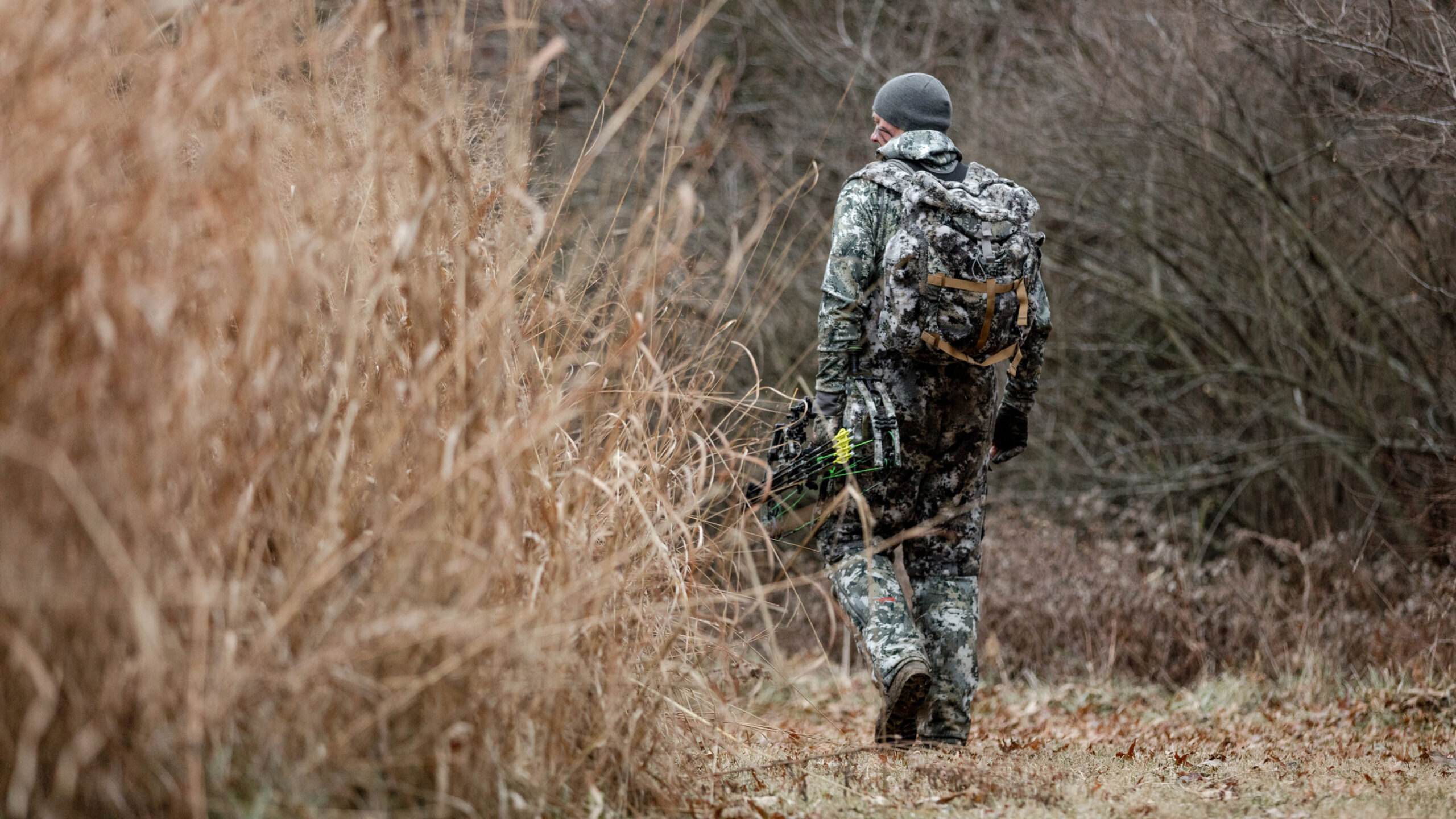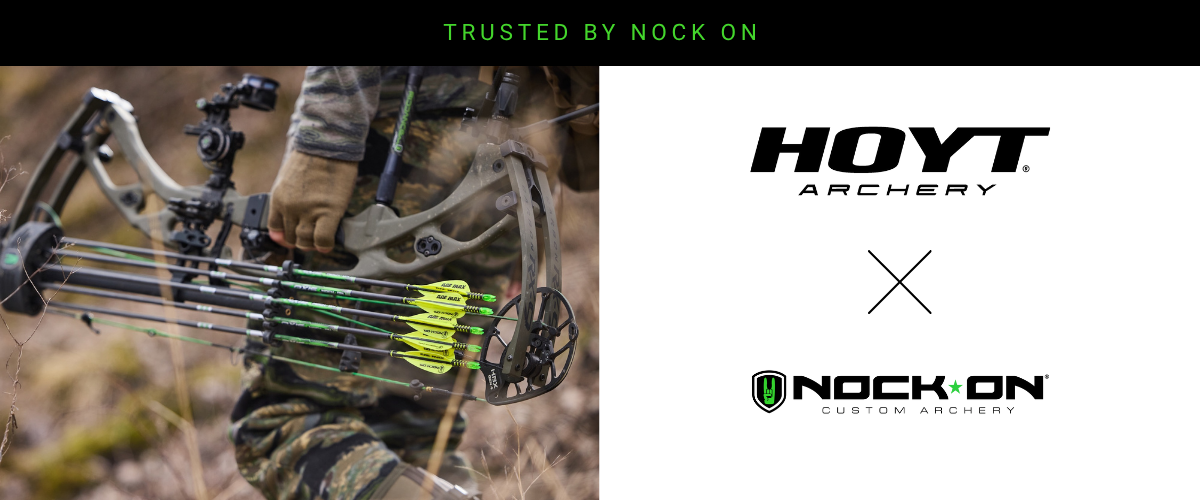The crack of a twig. A subtle shift in wind direction. The faint whiff of human scent.
Any of these can turn a promising hunt into a frustrating blank day. But what if your hunting spot had a carefully designed entry and exit strategy that kept you virtually undetectable?
The most lethal hunting locations are defined by your ability to get in and out without educating every deer in the county. Today, I’ll explain how I’ve set up one of my favorite ambush locations, designed for undetectable access and optimal deer stand placement.
Optimize your time this season with HuntWise! To get your Nock On Nation 25% discount visit: http://get.huntwise.com/nockon
Creating the Perfect Stealth Corridor
What makes this setup effective is what’s happening behind my hunting position.
About 80–90 yards away runs a busy roadway with regular traffic. Most hunters would write off this location immediately, assuming the proximity to human activity makes it worthless. But with the right design, we can turn that perceived weakness into a tactical advantage.
The cornerstone of this setup is a 20-yard-wide strip of native grasses I’ve planted, a CP25 blend that’s part of the Conservation Reserve Program. Once fully developed through the summer, these grasses will grow well above head height and:
- Provide a visual screen between my access route and the main feeding area
- Block my silhouette from deer already in the field
- Create a predictable travel corridor that funnels deer movement
- Dampen sound from both the road and my approach
Within this tall grass barrier, I maintain a mowed path just wide enough for silent access. This allows me to slip in on my electric bike without having to fight through noisy vegetation. The combination of road noise masking my approach and the tall grass blocking line of sight creates the perfect stealth corridor.
Think about your own hunting areas. Where can you plant or enhance natural vegetation to create a similar screening effect? Even if you can’t plant new growth, identify existing natural barriers that block sight lines to improve your entry and exit options.
Engineering Deer Movement to Your Advantage
Understanding deer behavior is the next big component of this system.
Adjacent to my setup is a large agricultural field that rotates between corn and soybeans. This field attracts deer throughout the season, but its function changes depending on the crop cycle.
During the early season, when corn is still standing, the field becomes both a food source and a bedding area. Deer live in that standing corn, so it’s important that I don’t alert them when I access my blind. After harvest, the field transitions into a feeding destination, and deer approach from different bedding areas. My access strategy works in both situations.
Between the tall grass corridor and the main field, I’ve established a small clover plot, a perfect staging area where deer pause before entering the larger field. They feel secure in this transition zone, which gives me predictable shot opportunities as they move between bedding and primary feeding areas.
The final piece of the movement puzzle is a deliberate funnel. I’ve maintained a thick fence line with a single, clear travel route, which makes it so that deer walk right into my shooting lane. They choose the path of least resistance, and I’ve made sure that path leads past my blind.
When assessing your hunting properties, look for natural pinch points where you can enhance or create these movement funnels. Old fence lines, creek crossings, and terrain features like saddles are all opportunities to guide deer movement. HuntWise’s detailed mapping features help me identify these natural funnels and plan my deer stand locations before I even step foot on the property.
The Complete Tactical System
Let me walk you through how this setup functions on an actual hunt.
I arrive on my electric bike, traveling quietly down the mowed corridor, where tall grass screens me from view. The nearby road noise masks any sound I might make. I park the bike in a small clearing adjacent to my blind, where it’s completely concealed by vegetation.
My Muddy blind sits elevated and tucked tightly against natural cover, which breaks up its outline. It’s positioned with windows that allow me to monitor both the staging area in front and stay aware of what’s happening behind me.
Wind direction matters here. I only hunt this setup when the wind is carrying my scent away from the areas deer will approach from. With the natural screening of the tall grass, my scent cone is contained to a manageable area.
As deer leave their bedding areas, they follow the edge of the tall grass to the small clover plot, pausing to feed in this staging area before continuing to the main field. The thick fence line naturally funnels them through the one easy passage I’ve created, right in front of my shooting window.
After the hunt, I exit using the same concealed corridor, never alerting deer to my presence. This preserves the spot’s effectiveness for future hunts, which would be impossible if deer caught me coming or going.
Practical Application for Your Hunting Areas
The beauty of this system is that it can be adapted to virtually any hunting scenario. Here’s how to apply these principles to your own hunting areas:
- Identify screening opportunities: Look for tall vegetation or opportunities to grow new plants that block animals’ line of sight to your access routes. Stacks of hay bales are another good option.
- Map deer movement patterns: Understand the deer’s primary feeding and bedding areas, then identify the transition zones between them.
- Create quiet access corridors: Establish or enhance paths that allow silent entry, considering both foot noise and visibility.
- Engineer natural funnels: Use existing landscape features or create new ones that guide deer movement past your position.
- Position for wind advantage: Set up your blind or stand where prevailing winds carry your scent away from deer routes.
The most successful hunters aren’t the best shots or the ones with the most expensive gear. They’re the hunters who understand how to get to their spots without educating deer. They recognize that entry and exit strategy is often the difference between consistent success and endless frustration.
Turning Theory Into Action
Next time you’re scouting a property, don’t just look for food sources and bedding areas. Spend time mapping access routes. Ask yourself:
- How can I use natural terrain to stay hidden during entry?
- Where can I establish or enhance screening vegetation?
- How will my scent disperse along my access route?
- What modifications could funnel deer movement to predictable locations?
- How can I exit after a successful harvest without alerting other deer?
By answering these questions, you’ll develop hunting setups that remain productive throughout the season rather than spots that get burned after a hunt or two.






 massmonopoly
massmonopoly